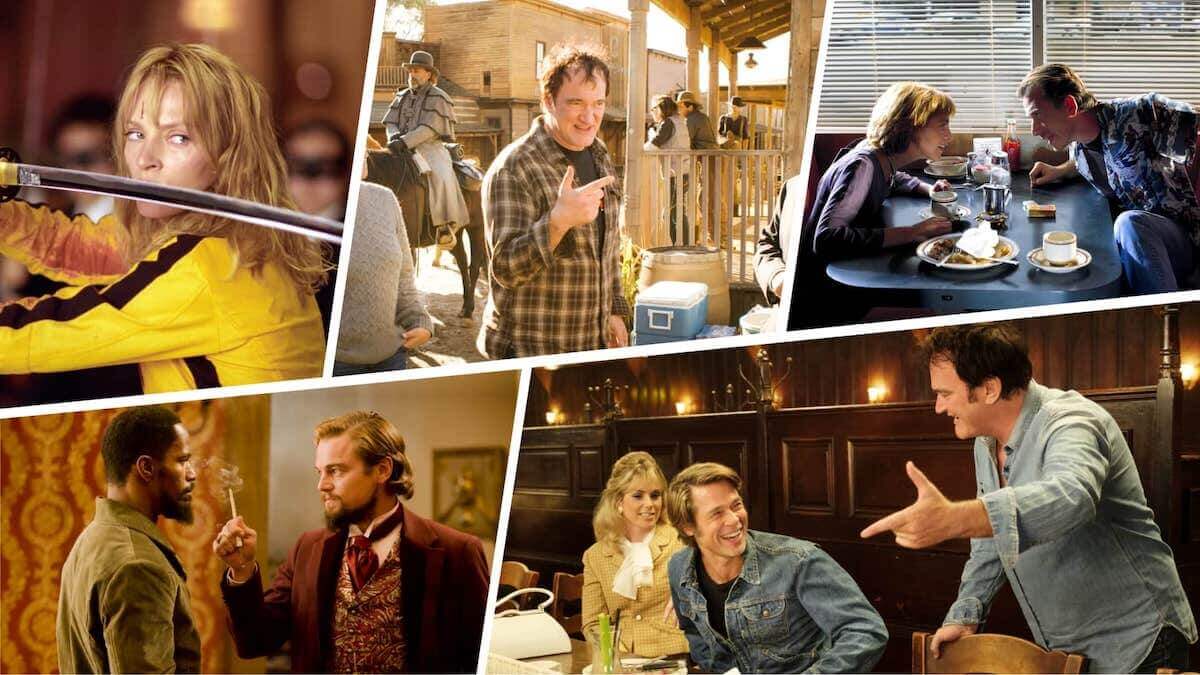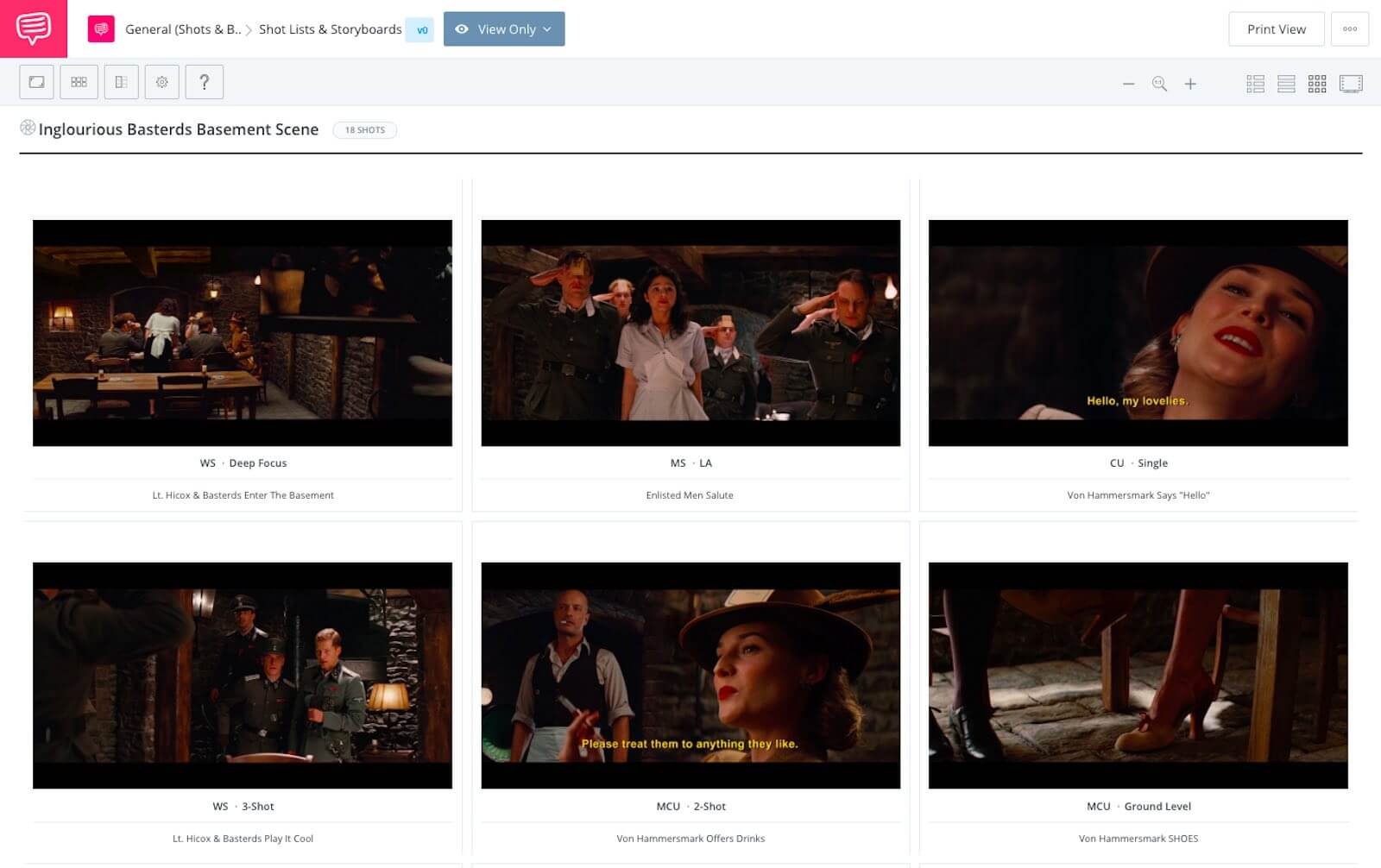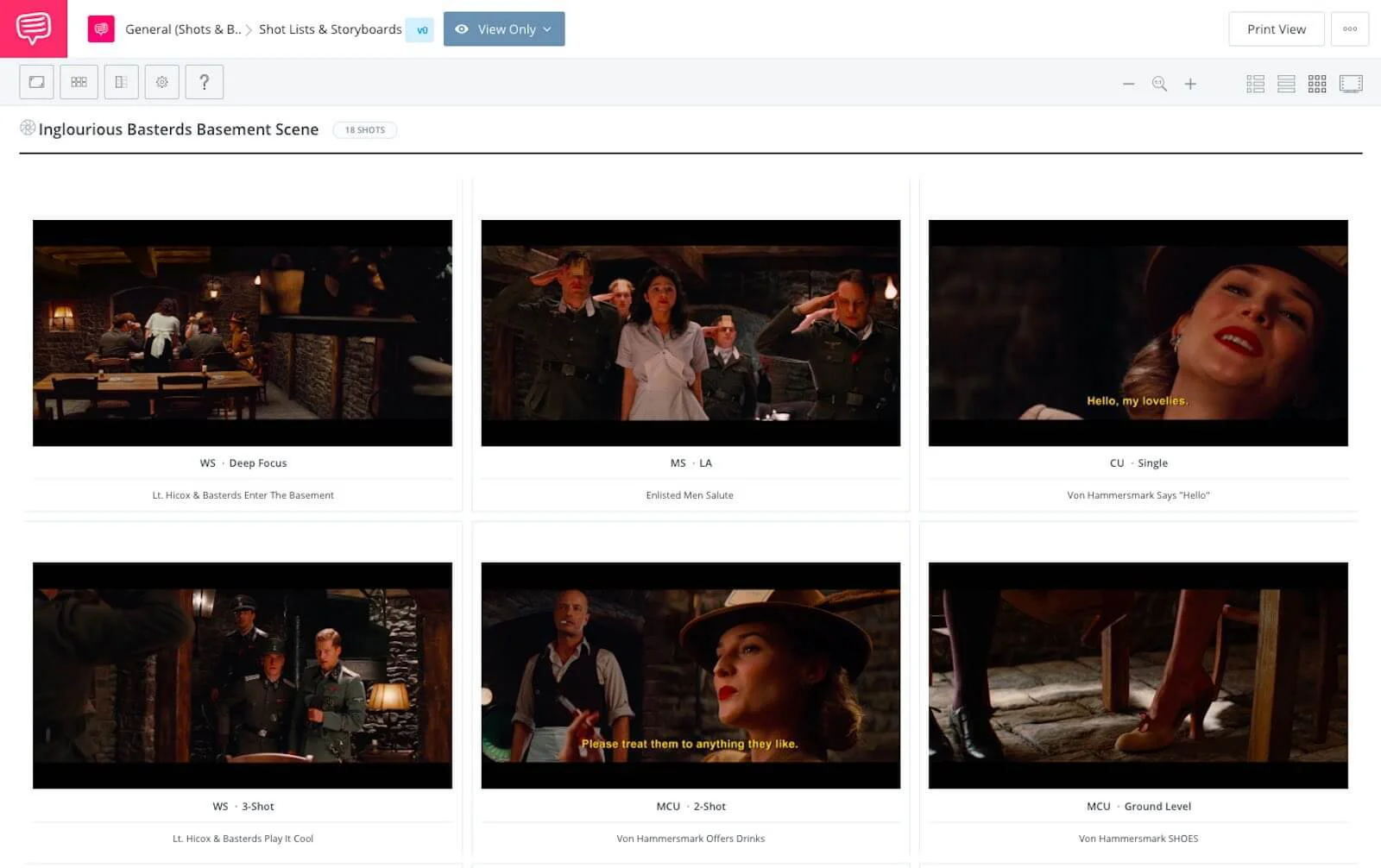How do you learn filmmaking techniques from a director like Quentin Tarantino? You can watch his films, and learn his filmmaking process with quotes from Quentin Tarantino interviews. We also built a video with directing tips and examples from Quentin Tarantino films. Become a better filmmaker by learning from the best.
Quentin Tarantino on his writing process
Once you know what to look for, it becomes a bit easier to find, and some of the screenwriting tips from Quentin Tarantino are illuminated. You can find quotes from Quentin Tarantino interviews where he explains finding the inspiration for this while watching the film Charley Varrick.
Example of Quentin Tarantino Hidden Drama
When you listen to the quotes from Quentin Tarantino interviews, you learn that he loves to build hidden drama. He does this by building high stakes scenes that introduce some previously unknown element.
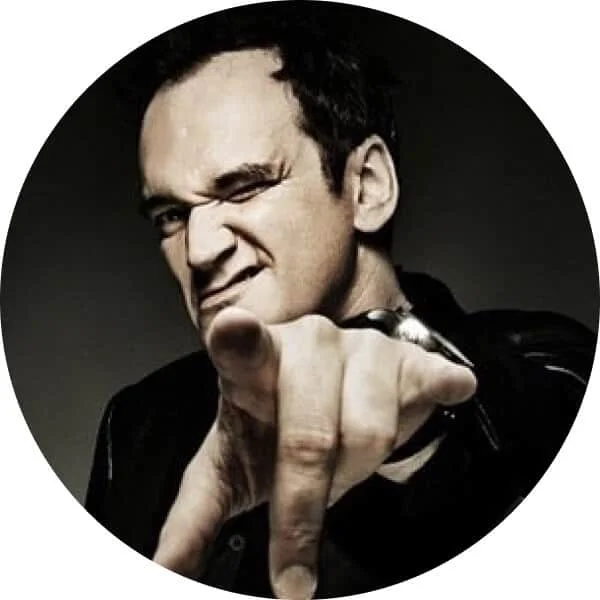
"I see the movie in my mind. Before I make the movie, I watch the movie. I've got a genuine vision. That's how I see it."
— Quentin Tarantino
The beauty is that the unknown element was there all along, and in his later films he even leaves clues around the scene that, if you know what to look for, give away the notion that some other factor is present.
This also makes a lot of the film an opportunity for surprise, because you never know when a Quentin Tarantino character is going to bite the dust, or if they are someone who will come back later in the film.
QUENTIN TARANTINO DIRECTING
2. Stretch out the suspense
One prominent feature described in Quentin Tarantino interviews, and a major element in his directing style, is his stretched-out suspense. Because Tarantino scenes are often about eliciting emotions based on developments in the plot, he will stretch scenes out in a way that disarms the viewer, taking them on tonal shifts that can excite, depress, and entertain all at the same time. Like the Spahn Ranch sequence from Once Upon a Time...in Hollywood.
Directing Suspense in Once Upon a Time • Subscribe on YouTube
Tarantino uses dialogue to draw out suspense in many of his films but his work in Inglourious Basterds is on a whole different level. One of these set-pieces is the drinking game set in a basement where you can cut the tension with a knife. Let's look at the scene broken down.
Quentin Tarantino Shot List • Shot Listed in StudioBinder
Tarantino’s screenwriting process is based on his own personal flow, and he believes in his ability to write interesting scenes without concern for the length or other Hollywood considerations applied to other films.
Example of Quentin Tarantino Stretched Out Suspense
When you listen to quotes from Quentin Tarantino interviews, you will hear him talk about going down the rabbit hole with his characters and plot developments, and that writing process is actually the way he finds the inspiration for the rest of the scene and screenplay.
Instead of trying to precisely plan the screenplay the first time, he’ll write a script, then rewrite the script completely differently, and then rewrite the script again finding new destinations along the way.
And it’s with that shear effort to revise multiple screenplay drafts that Tarantino is able to write some of the best dialogue.
El Rey - The Director's Chair with Quentin Tarantino
Because his scenes are stretched out with tonal shifts, Quentin Tarantino characters also get to have more emotions that play out in different ways in a single scene. The character motivation isn’t “You’re mad” or “You’re excited” but rather “You’re going to feel every emotion at some point in this scene” which allows us to gain a complete picture.
Quentin Tarantino Dialogue
3. Write robust dialogue
Quentin Tarantino has been quoted in many interviews as saying he is an actor turned screenwriter turned director. This is one of the main reasons he loves to write robust dialogue in his screenplays.
It also allows Quentin Tarantino characters to be loved despite being immoral and flawed. They have charismatic and authentic dialogue.
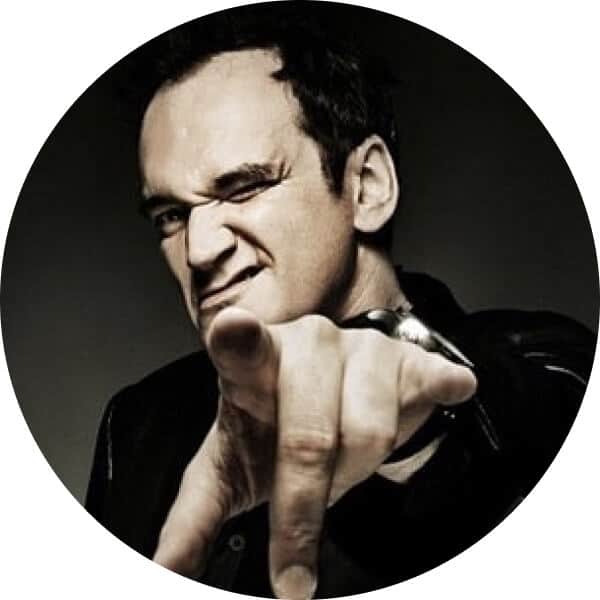



"I'd see a scene in a movie, and I'd just remember it. Then I'd go home and I'd write it from memory. And anything else I couldn't remember, or anything good I came up with in the meantime — I'd add it to the scene."
— Quentin Tarantino
Tarantino always keeps character development and story in mind, which allows his dialogue to seem digressive, but actually remains thoughtfully germane to the events either taking place in the moment, or to be encountered later on in the film — also known as a "call back" — one of our screenwriting tips for better dialogue.
Example of Quentin Tarantino Robust Dialogue
Tarantino dialogue gives the characters their own perspectives, points of view, and unique voices that protect scenes from boredom. Quentin Tarantino characters get to have unique thoughts that no other screenwriter or director seems to tackle.
Tarantino Dialogue Set-Pieces • Subscribe on YouTube
Quentin Tarantino’s dialogue is also highly stylized and changes from film to film, but many of his characters have very interesting stories they like to tell during suspenseful moments. He uses analogy and his knowledge on various topics to create scenes that are truly one of a kind and honest.
Quentin Tarantino Structure
4. Use nonlinear structures
Quentin Tarantino is famous for films that use a nonlinear structure, but funny enough he is quoted in interviews as saying he cannot write his screenplays out of order. Tarantino’s claims that his writing process requires him to build each scene in perfect order, because he is discovering each moment along with the characters.
Quentin Tarantino on having a vision
The nonlinear structure used in Quentin Tarantino's best work often comes later in the rewrites, Pre-Production, and editing room. It works so well because the scripts are written in a tight and deliberate manner.
Example of Quentin Tarantino Nonlinear Structure
Quentin Tarantino doesn’t need to be concerned with how each disparately connected scene will play with each other because his writing process is so sequential that the scenes work perfectly with one another no matter which order they’re presented to the viewer.
This may be the main difference between Quentin Tarantino’s nonlinear structure and Christopher Nolan’s nonlinear structure. Nolan wants the structure to inform and be part of the plot, whereas Tarantino just wants to play with the emotions of the audience for a little bit.
Even in cases like Kill Bill where the nonlinear structure was somewhat planned, you learn from Quentin Tarantino quotes and interviews that he wasn’t completely sure how he would arrive at the wedding scene, but also says that discovery is part of the fun.
Here's a fun little scene recreation we shot in an afternoon:
How to Recreate a Shot from Kill Bill • Subscribe on YouTube
Quentin Tarantino Homage
5. Pay homage to cinema
When you’ve watched as many films as Quentin Tarantino you can’t help but borrow a few tricks from past directors. In fact, this is one of the reasons he is such a great screenwriter and director.
Tarantino has an encyclopedic knowledge for film, and his passion for making movies is so strong that he loves to give little ‘shout outs’, known as paying homage, to cinematic moments that resonated with him.
Example of Quentin Tarantino Homage to Cinema
In every film, you can see some for of homage paid to John Ford, exploitation films from the 1970s, Bruce Lee, Alfred Hitchcock, Fritz Lang, Spaghetti Westerns, and of course…. The Flintstones.
Quentin Tarantino always finds a way to make these moments fresh, and while many viewers may not realize where each of these references originates, you don’t get the feeling he is straight up ripping them off.
Tarantino truly loves those moments and memories, and he wants to keep them alive in the best way imaginable — by filming them again.
Quentin Tarantino Music
6. Have fun with music
Quentin Tarantino music is perfect. In fact, every time you hear Tarantino talk about music in an interview, he will mention how he finds the most interesting moments in cinema is when songs create iconic cinematic moments, and that extends to his own work as well.
He loves fun music, and Quentin Tarantino characters love and react to music as well. They dance and sing, and they’re human beings with ears who can hear, rather than actors moving through sets with a permanently attached score to accompany every blink and twitch.
You'll learn from Quentin Tarantino quotes and interviews that he spent the entire music budget for Reservoir Dogs on a single track. He was so passionate about a particular moment that he wanted in the film, and he had to have that specific song for the scene to work so effectively.
Let's dive deeper into the unique relationship Tarantino has with music in his movies. In this video, we'll explore the various ways in which Tarantino defies expectations with his music choices.
Quentin Tarantino Music • Subscribe on YouTube
In an interview with Quentin Tarantino, he talks about how he avoided working with a professional composer because it never felt right, and when confronted about the music for Jackie Brown by producer Harvey Weinstein, Tarantino vetoed the idea of hiring a composer.
Quentin Tarantino music is sometimes tonally ironic when placed against the visuals, but it always seems to elevate the material because there is a cohesive vision from the screenwriter and director.
He does the same juxtaposition with sound design, especially in scenes of violence. Watch this breakdown on how Tarantino masters tone and our experience of violent scenes with either realistic or stylistic sound.
Tarantino Sound Design • Subscribe on YouTube
The style and eclectic nature of old songs that somehow few have ever heard, but are also somehow familiar to everyone on a deeper level - these are some trademarks of Quentin Tarantino music and sound.
Related Posts
UP NEXT
Quentin Tarantino Directing Style
You’ve watched our video and read the post, but there is still a lot more to cover. We’ve got an entire section dedicated to auteur filmmakers, so why not read about as many as possible to learn from the best filmmakers around. Next up is Quentin Tarantino’s Filmmaking Style.
Up Next: Tarantino’s Style →
Showcase your vision with elegant shot lists and storyboards.
Create robust and customizable shot lists. Upload images to make storyboards and slideshows.
